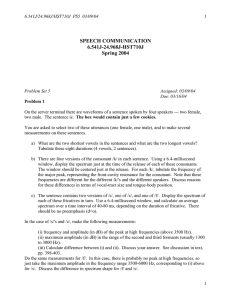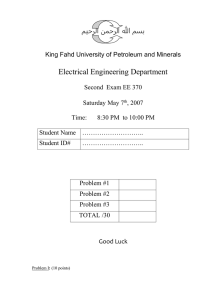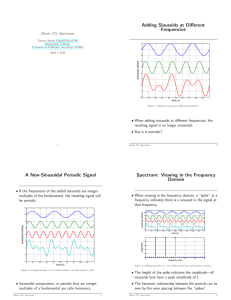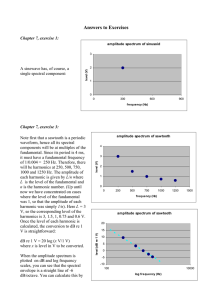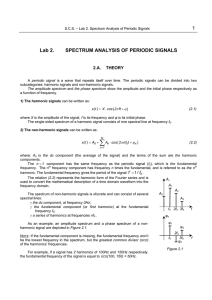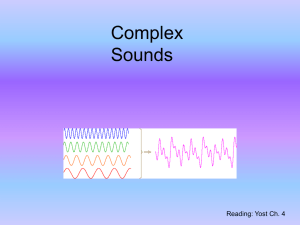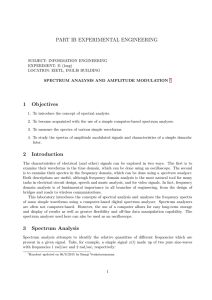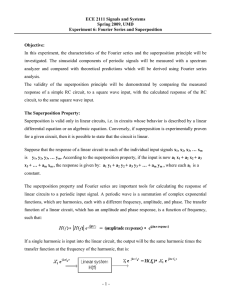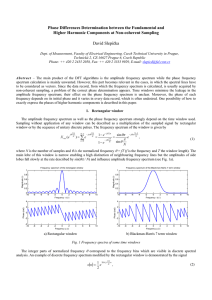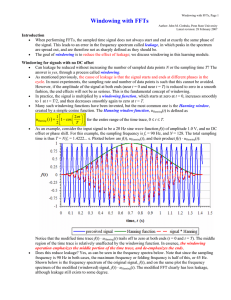VSRT M #042 MASSACHUSETTS INSTITUTE OF TECHNOLOGY
advertisement
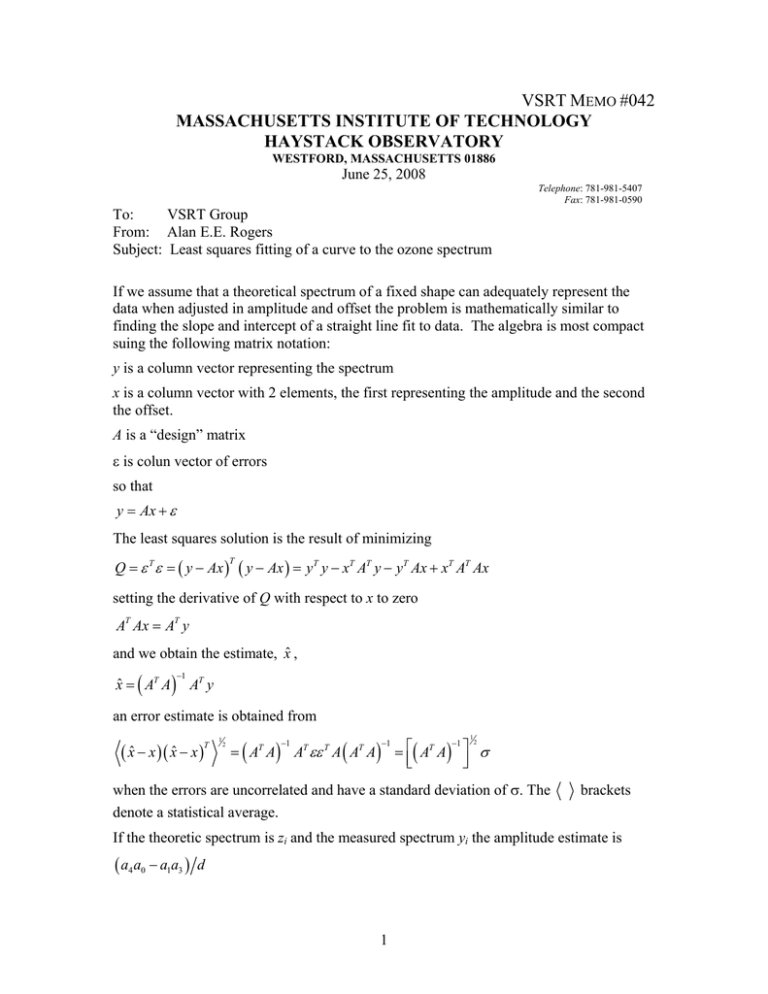
VSRT MEMO #042 MASSACHUSETTS INSTITUTE OF TECHNOLOGY HAYSTACK OBSERVATORY WESTFORD, MASSACHUSETTS 01886 June 25, 2008 Telephone: 781-981-5407 Fax: 781-981-0590 To: VSRT Group From: Alan E.E. Rogers Subject: Least squares fitting of a curve to the ozone spectrum If we assume that a theoretical spectrum of a fixed shape can adequately represent the data when adjusted in amplitude and offset the problem is mathematically similar to finding the slope and intercept of a straight line fit to data. The algebra is most compact suing the following matrix notation: y is a column vector representing the spectrum x is a column vector with 2 elements, the first representing the amplitude and the second the offset. A is a “design” matrix ε is colun vector of errors so that y = Ax + ε The least squares solution is the result of minimizing Q = ε T ε = ( y − Ax ) T ( y − Ax ) = yT y − xT AT y − yT Ax + xT AT Ax setting the derivative of Q with respect to x to zero AT Ax = AT y and we obtain the estimate, x̂ , xˆ = ( AT A ) AT y −1 an error estimate is obtained from ( xˆ − x )( xˆ − x ) T 1 −1 −1 −1 2 = ( AT A ) AT εε T A ( AT A ) = ⎡⎢( AT A ) ⎤⎥ σ ⎣ ⎦ 1 2 when the errors are uncorrelated and have a standard deviation of σ. The brackets denote a statistical average. If the theoretic spectrum is zi and the measured spectrum yi the amplitude estimate is ( a4 a0 − a1a3 ) d 1 N −1 where a4 = ∑ zi yi i =0 a0 = N a1 = ∑ zi a3 = ∑ yi d = a0 a2 − a12 The error estimate in amplitude d 2σ −1 Reference: Bevington, P.R., Robinson, D.K., “Data reduction and error analysis the physical sciences,” McGraw-Hill, 1992. 2


